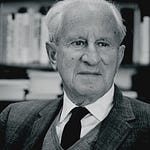Imagine a world tailored precisely to your desires. A stage where you are the unfailing hero, the witty conversationalist, the beloved confidante. A sanctuary from the demands of reality, always just a thought away. For many, this inner theatre is a harmless, even creative, escape. A momentary lapse into fantasy before returning to the everyday.
But what if the curtain never quite falls? What if the audience of your mind becomes more real than the faces across your dinner table? This isn’t just vivid imagination; it’s a phenomenon known as “maladaptive daydreaming,” a profound entanglement that, for countless individuals, transforms a beautiful inner world into an invisible, yet ironclad, prison.
It’s a silent struggle, often hidden in plain sight. An endless script playing out behind the eyes, consuming hours, days, even years. What drives this compulsive retreat, and how does one break free from its alluring grip?
The Allure of Inner Worlds
The initial draw is undeniable. Who among us hasn’t yearned for a moment of perfect control? A space where awkward social encounters never happen, where every ambition is realized, where every wound is healed?
Maladaptive daydreaming offers precisely that: an elaborate, immersive fantasy world, often with recurring characters, intricate plotlines, and a detailed sense of place. It feels real. It feels comforting.
It’s an escape valve from the pressures of life. From loneliness, anxiety, trauma, or simply the crushing boredom of routine. In these self-made realms, you are always enough. You are celebrated. You are free from judgment.
But this freedom comes at a cost, doesn’t it?
The Cracks in the Facade
The problem arises when the inner world begins to supersede the outer one. When the lines blur, and the preference for fantasy over reality grows stronger, more insistent.
Hours evaporate. Responsibilities are neglected. Real-life relationships suffer, starved of the presence and engagement dedicated to an imaginary cast of characters. The vividness that once brought joy now brings a profound sense of guilt and isolation.
It becomes a compulsion, a desperate need to return to the comfort of the mind’s theatre, even as one recognizes the damage it inflicts on their actual life. The very act of seeking solace in an idealized inner world often deepens the chasm between who we are and who we truly wish to become in the tangible world.
Is this really living?
We are what we pretend to be, so we must be careful what we pretend to be.
— Kurt Vonnegut
Understanding the Mechanisms of Escape
Maladaptive daydreaming is not a sign of weakness, nor is it merely “too much imagination.” It’s often a sophisticated coping mechanism, developed in response to unmet needs or overwhelming stress.
It can be linked to:
Trauma: A way to process or escape painful memories.
Loneliness: Creating companions and connections that are missing in reality.
Anxiety and Depression: A refuge from overwhelming emotions or negative self-talk.
Neurodivergence: Some individuals with ADHD or autism might find it a way to self-regulate or find intense stimulation.
The brain, seeking comfort or stimulation, becomes accustomed to the powerful reward it receives from these internal narratives. It’s a dopamine hit, a quick fix, leading to a cycle that can be incredibly difficult to break. It feels like an addiction, even without a substance.
How do we reclaim ourselves from such a powerful, internal force?
Reclaiming the Realm of Reality
Breaking free from maladaptive daydreaming requires courage and conscious effort. It means acknowledging the pain or boredom that drives the escape, and choosing to face it.
There is no magic cure, but there are powerful strategies:
Awareness and Identification: Recognize when you are slipping into a daydream. What are your triggers? What emotions precede the escape? Keeping a journal can be immensely helpful.
Grounding Techniques: Practice mindfulness. Engage your five senses to anchor yourself in the present moment. Feel the chair beneath you, hear the ambient sounds, notice the textures around you.
Structured Engagement: Actively schedule your time. Fill your day with real-world activities, social interactions, and hobbies that demand your full presence.
Seek Support: Connect with others who understand. Online communities exist, and therapy, particularly cognitive-behavioral therapy (CBT) or dialectical behavior therapy (DBT), can provide invaluable tools and strategies.
It’s a journey of gently, yet firmly, redirecting your mind. Of building a life in the real world that is rich and engaging enough to compete with the allure of fantasy.
The cure for anything is salt water – sweat, tears, or the sea.
— Isak Dinesen
Unlock deeper insights with a 10% discount on the annual plan.
Support thoughtful analysis and join a growing community of readers committed to understanding the world through philosophy and reason.
Conclusion
Maladaptive daydreaming is a testament to the incredible power of the human imagination. But like any powerful force, it can be harnessed for creation or become a tool for self-imprisonment.
The seductive prison of an idealized inner world offers temporary relief, but at the cost of genuine connection, personal growth, and a full, lived experience. The path to freedom is not about abandoning imagination, but about integrating it into a life fully present and engaged with reality.
It demands an honest look at what we are running from, and the brave decision to build a world worth living in, one conscious choice at a time.










